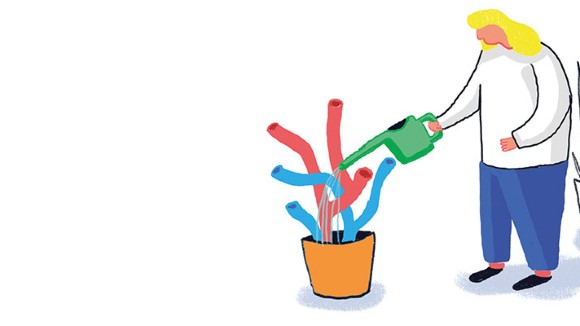This Nature Outline is editorially independent, produced with financial support from a third party. About this content.
Our cells rely on a steady supply of oxygenated blood, delivered by the arteries and capillaries. But the build-up of sticky plaques can cause the arteries to narrow, restricting blood flow. In some people, this starves the limbs of blood, leading to a serious condition called critical limb ischaemia that kills more than half of those affected within 5 years of diagnosis. Although blocked arteries can sometimes be cleared through surgery, for many patients, the only option is amputation to remove the affected limb. This animation explores gene and cell-based therapies that aim to stimulate the growth of new blood vessels, revitalizing blood-starved tissues and helping to avoid the need for amputation.

